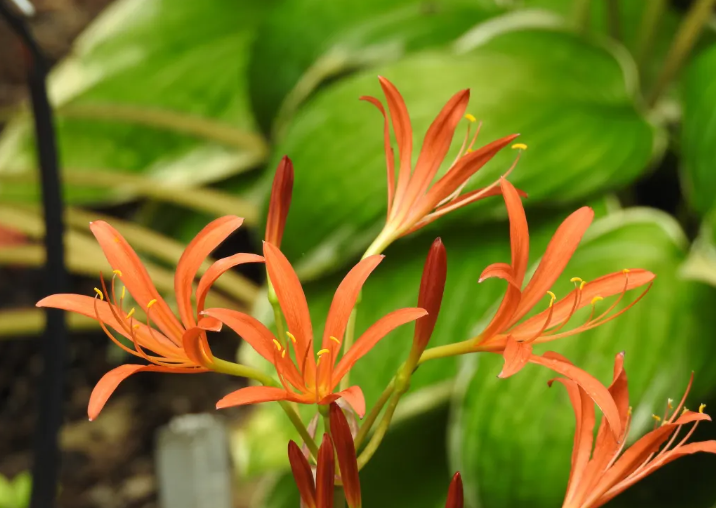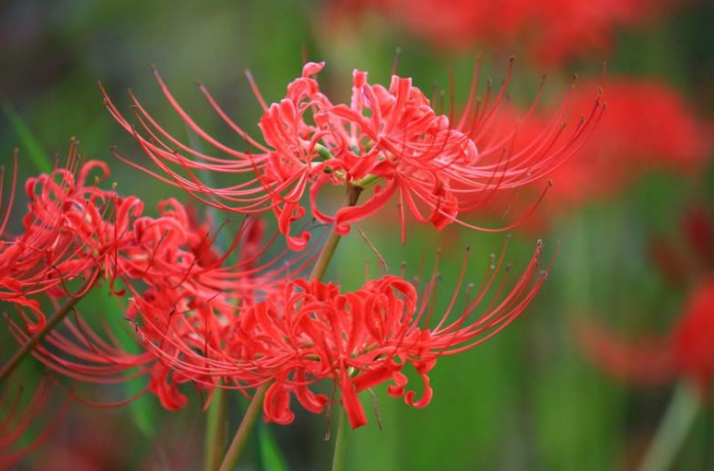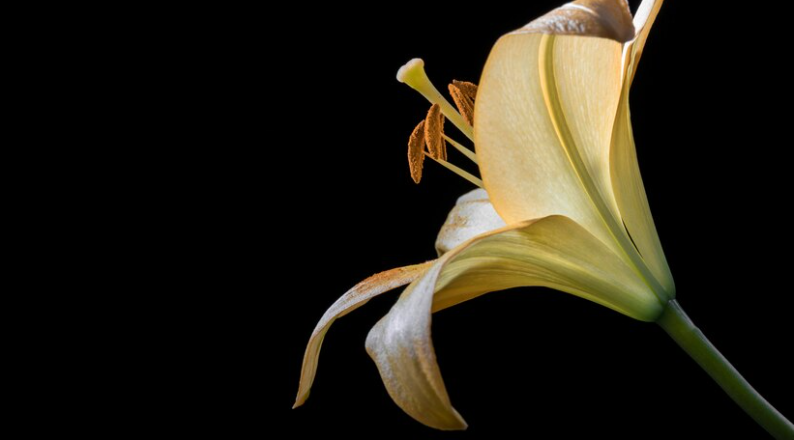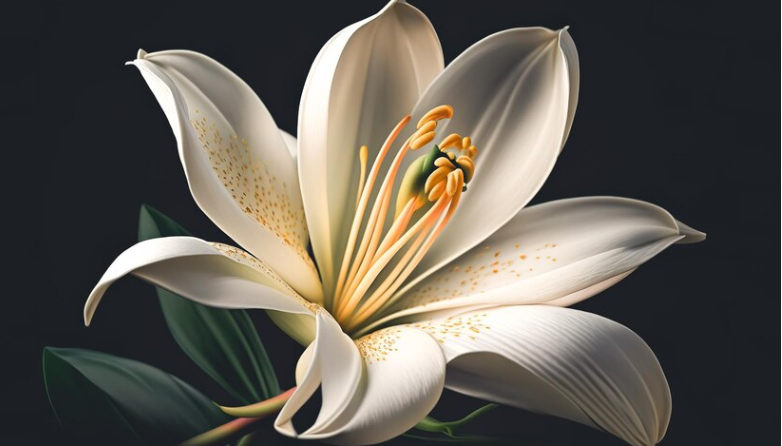Introduction: The Unexpected Blooms
In the quiet corners of our gardens, where the earth cradles secrets and whispers of forgotten enchantments, there exists a flower that defies expectations. Its name? The magic lily a barren landscape, parched by the summer sun, suddenly transformed by delicate, trumpet-like blooms that emerge seemingly out of thin air. These ethereal flowers, pale pink and fragrant appear as if by magic, catching us off guard with their unexpected beauty.
The Mystery Unfolds
The magic lily (Lycoris squamigera) is no ordinary flower. Native to Southeast China, Japan, and Korea, it thrives in moist, disturbed areas—valleys, stream banks, and forgotten corners of forgotten gardens. But what truly sets it apart is its life cycle. In spring, its silvery-gray, strap-like leaves emerge, only to wither away by summer’s end. Then just when we’ve forgotten about it, the magic happens. From seemingly lifeless soil, slender stalks shoot forth, bearing clusters of enchanting blooms. It’s as if the lily rises from the dead, a botanical phoenix reborn.
The Resurrection Flower

The magic lily’s common names—surprise lily, resurrection lily, and magic lily—allude to this mystical transformation. Imagine the wonder of witnessing those pale pink petals unfurl, their iridescent sparkle catching the sunlight. It’s a reminder that life, even in its most dormant moments, holds the promise of renewal. Perhaps that’s why ancient cultures revered the lily as a symbol of hope, resilience, and the cyclical nature of existence.
The Art of Cultivation
Growing magic lilies requires a touch of patience and a dash of magic. Plant the bulbs in well-drained, fertile soil, burying them 8 to 12 inches deep. They prefer full sun to partial shade, and once established, they’ll surprise you year after year. But beware of the frost—these delicate blooms suffer when temperatures dip below 28°F. To protect them, mulch with a cozy layer of straw or leaves.
Tips for Growing Magic Lilies
Growing magic lilies (Lycoris squamigera) is a delightful experience, and they truly live up to their enchanting name. Here are some care tips to ensure these captivating blooms thrive in your garden:
Soil and Location:
- Magic lilies are easygoing when it comes to soil. They do well in various soil types, but for the showiest blossoms, choose a well-draining, fertile soil.
- Plant them in a location that receives full sun to partial shade. These lilies appreciate sunlight but can tolerate some shade.
Planting Depth:
- The bulbs of magic lilies are about the same size as daffodil bulbs. Plant them at a depth of 4 to 6 inches.
- In colder climates, it’s best to plant them at the deeper end of this range (around 6 inches deep).
Temperature Sensitivity:
- While magic lilies are hardy, extreme temperatures can affect their flowering.
- If summers or winters are radically hot or cold, the lilies may produce fewer and smaller flowers.
Watering:
- Water the bulbs lightly until top growth emerges in spring.
- During their growing period, water them moderately. They dislike being too dry, but soggy soils can lead to root rot.
Mulching and Winter Protection:
- Mulch the bulb roots to retain moisture and provide cool shade during hot summers.
- In colder areas, protect the bulbs by applying a deep, dry mulch over winter.
Dividing and Maintenance:
- Magic lilies spread quickly. To keep them strong and encourage big blooms, divide them approximately every three years.
- Each bulb planted in the fall can produce at least two new plants by the following year.
- the magic lily’s resilience and surprise lie not only in its blooms but also in its ability to emerge from seemingly dormant soil. May your garden be graced with these enchanting flowers!
How do I propagate magic lilies through division?

Propagating magic lilies (Lycoris squamigera) through division is a straightforward process. Follow these steps to multiply your enchanting blooms:
Timing:
Wait until the lilies are dormant typically in late summer or early fall. This is the ideal time for division.
Prepare the Lily Clump:
- Cut down the stems to about 5 to 6 inches (13-15 cm) above the soil level.
- Gently dig around the lily clump using a garden fork. Dig approximately 12 inches (31 cm) deep and 6 to 8 inches (15-20 cm) away from the clump to avoid damaging the bulbs.
Separate the Bulbs:
- Brush off the dirt to reveal the individual bulbs within the clump.
- Gently pull or twist the bulbs apart, untangling the roots as you work. Each separated bulb should have a nice amount of root attached.
Replant:
- Plant the separated bulbs in well-draining soil at the same depth they were originally growing.
- Space them appropriately, allowing room for growth. You can plant them in groups or scatter them throughout your garden.
Water and Mulch:
- Water the newly planted bulbs thoroughly to settle the soil around the roots.
- Apply a layer of mulch (such as straw or leaves) to retain moisture and protect the bulbs during winter.
Enjoy the Magic:
- With proper care, your divided magic lilies will reward you with flourishing blooms next year.
- the magic lies not only in the blooms but also in the act of propagation—a dance with nature that perpetuates wonder.
How do I Care for Magic Lilies during Winter?

Magic lilies (Lycoris squamigera) are captivating plants that seem to appear out of thin air, enchanting us with their pale pink blooms. When it comes to winter care, here are some essential tips to ensure your magic lilies thrive:
Prepare for Dormancy:
- Like spring bulbs, magic lily bulbs remain dormant throughout winter.
- In spring, when daffodils and other spring flowers sprout and bloom, magic lily bulbs produce leaves only. These leaves disappear by the start of summer, leaving behind a sense of mystery and anticipation.
Cut Back Spent Foliage:
- As the growing season ends and the foliage starts to wither cut off any spent flowers.
- Allow the greenery to die back naturally. This process helps the plant conserve energy and prepare for its dormant phase.
Diminish Watering:
- As the magic lily begins to go dormant, reduce watering.
- The bulbs don’t need as much moisture during their rest period. Overwatering can lead to rot.
Mulch for Winter Protection:
- Before the first frost arrives, consider adding a protective layer of mulch around the bulbs.
- Apply about a 2-inch layer of mulch (such as straw or leaves) to insulate the soil and shield the bulbs from extreme cold.
Storage Options:
- If you’re growing magic lilies in containers, you can dig up the bulbs before winter sets in.
- Place the bulbs in containers or bags filled with a mixture of sand and peat moss.
- Store them in a cool, dark area where temperatures stay between 35-45 degrees Fahrenheit. A garage, basement, or any frost-free location works well.
- the magic lily’s resilience extends to its ability to withstand winter’s chill. By following these care guidelines, you’ll ensure a magical return when spring arrives!
Conclusion:
As we marvel at the magic lily’s fleeting beauty, let us ponder: What dormant dreams lie within us, waiting for their moment to bloom? Could we, like the lily, rise from the depths of uncertainty and surprise the world with our resilience? Perhaps the magic lily’s lesson is simple yet profound: Life’s most enchanting moments often arrive when we least expect them.






